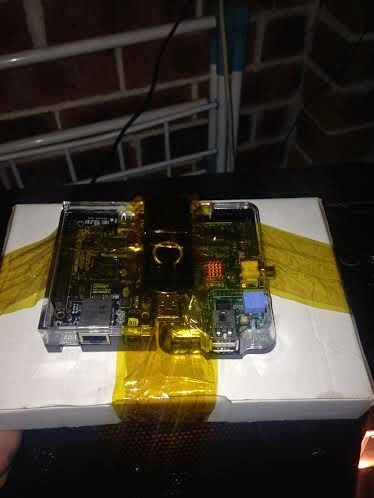I come home with an obscene amount of loot over the past two days, some of it is in the gratuitous photograph above. In the picture:
* An Asus dual core Atom Fonepad with a smashed screen, but everything else working
* A FitPC3
* A BeagleBoard Black (BBB) in case
* A RaspberryPi Model B, MkII (RPi) in case
* Lots of circuit boards for me to solder up
* A remote for 443MHz WattsClever power points
* A 915MHz Z-Wave USB stick
Please ignore the cable clutter. When you come to know me, you come to understand, as much as I like cables, and know what each one does, cables are the bane of my existence. It has become so much of a nightmare, I have frustrated partners into arguments - "Why the Hell are you playing with all of those damn cables?! Do you even know what each one does?!" Sadly, I do. So don't ever ask stupid questions, or you will get an intelligent answer.
Peeking out in the top left corner is my Parallella. Oddly, the HDMi display has stopped coming on, but SSH, and VNC after activating the server, work fine. Oh well, that display is meant for my NUC anyway, the whole point of having access to the Parallella was to have VNC on it.
The FitPC may have a new home. We'll see...
Enough obscene amounts of computing hardware for now... enjoy!









.png)

